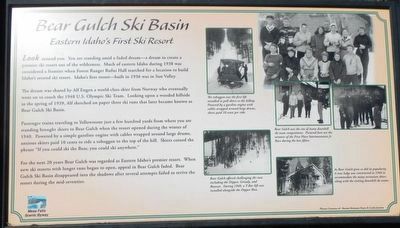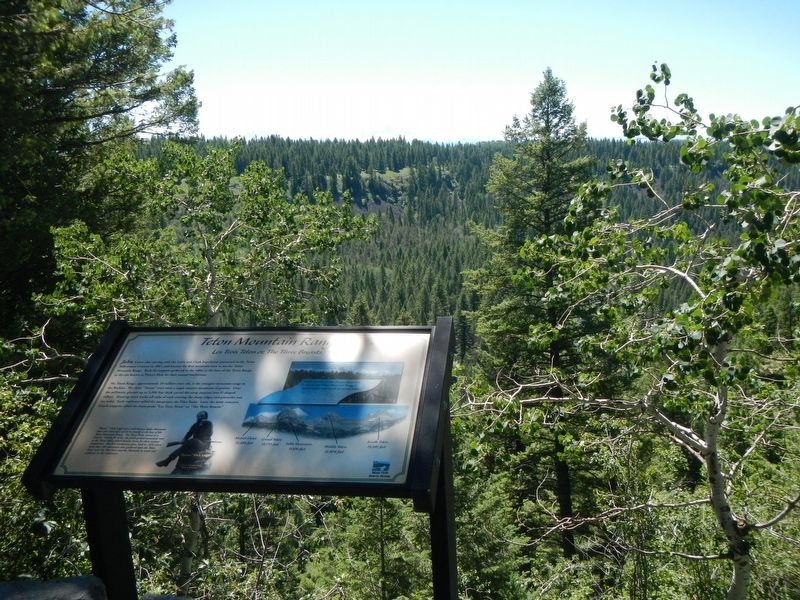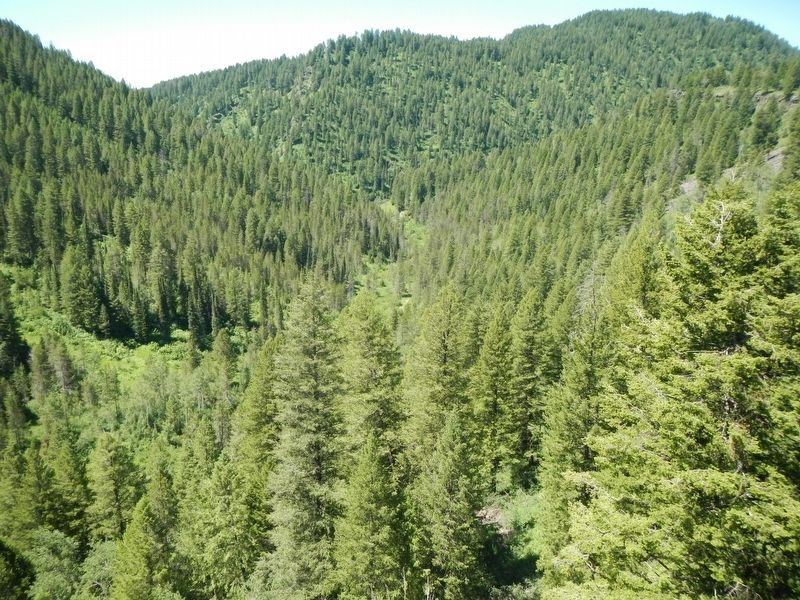Near Ashton in Fremont County, Idaho — The American West (Mountains)
Bear Gulch Ski Basin
Eastern Idaho's First Ski Resort

Photographed By Barry Swackhamer, June 23, 2017
1. Bear Gulch Ski Basin Marker
Captions: (top center) The toboggan was the first lift installed to pul skiers to the hilltop. Powered by a gasoline engine with cables wrapped around large drums, skiers paid 10 cents per ride.; (3 photos, top right) Bear Gulch was the site of many downhill ski teams competitions. Pictured here are the winners of the First Place Intermountain Jr. Race during the late fifties.; (bottom center) Bear Gulch offered challenging ski runs including the Dipper, Grizzly, and Bearcat. During 1948, a T-Bar lift was installed alongside the Dipper Run.; (bottom right) As Bear Gulch grew so did its popularity. A new lodge was constructed in 1948 to accommodate the many recreation skiers along with the visiting downhill ski teams.
A dream was shared by Alf Engen a world-class skier from Norway who eventually went on to coach the 1948 U.S. Olympic Ski Team. Looking upon a wooded hillside in the spring of 1939, Alf sketched on paper three ski runs that later became known as Bear Gulch Ski Basin.
Passenger trains traveling to Yellowstone just a few hundred yards from where you are standing brought skiers to Bear Gulch when the resort opened during the winter of 1940. Powered by a simple gasoline engine with cables wrapped around large drums, anxious skiers paid 10 cents to ride a toboggan to the top of the hill. Skiers coined the phrase "If you could ski at Bear, you could ski anywhere."
For the next 20 years Bear Gulch was regarded as Eastern Idaho's premier resort. When new ski resorts with longer runs began to open, appeal in Bear Gulch faded. Bear Gulch Ski Basin disappeared into the shadows after several attempts failed to revive the resort during the mid-seventies.
Topics. This historical marker is listed in this topic list: Sports . A significant historical year for this entry is 1939.
Location. 44° 9.294′ N, 111° 17.25′ W. Marker is near Ashton, Idaho, in Fremont County. Marker is on Mesa Falls Scenic Byway (State Highway 47) near Wood Road (Forest Road 367), on the left when traveling north. Touch for map. Marker is in this post office area: Ashton ID 83420, United States of America. Touch for directions.
Other nearby markers. At least 8 other markers are within 16 miles of this marker, measured as the crow flies. Teton Mountain Range (approx. one mile away); Big Falls Inn (approx. 3 miles away); Volcanic Calderas (approx. 7.6 miles away); The Three Tetons (approx. 9 miles away); Ashton-Marysville Area Pioneers (approx. 9.2 miles away); Caldera Lookout (approx. 12˝ miles away); Harriman State Park (approx. 13˝ miles away); Harriman Wildlife Refuge (approx. 15.2 miles away). Touch for a list and map of all markers in Ashton.
Credits. This page was last revised on October 14, 2017. It was originally submitted on October 14, 2017, by Barry Swackhamer of Brentwood, California. This page has been viewed 1,086 times since then and 64 times this year. Photos: 1, 2, 3. submitted on October 14, 2017, by Barry Swackhamer of Brentwood, California.

